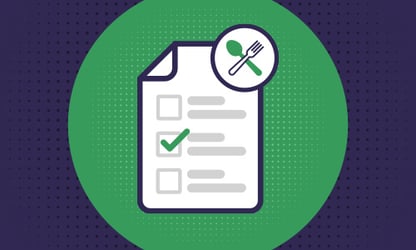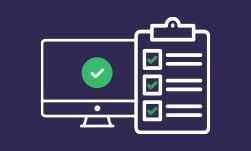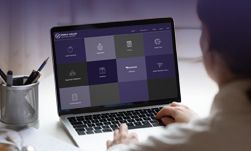How do I run a successful school cafeteria? This is a question that many schools and school administrators ask themselves. But there are a few basic ideas you can use to make lunchtime orderly, calm, punctual and even fun.
If you’re wondering how to manage a school cafeteria, keep reading for tips on how to set up the cafeteria, from the room to seats and tables, and how to use signs and rules to make the process run smoothly. Using cafeteria supervisors, school bells and an effective schedule keeps students moving, while giving them time to enjoy time with their friends. Keep reading for tips on managing your school cafeteria!
Table of Contents:
- Create the Layout
- Add Design Features
- Keep It Minimal
- Have Cafeteria Rules
- Have Supervisors in the Room
- Have Strict Times
- Serve Better School Lunches
- Have Assigned Tables
- Benefits of School Cafeteria Management
- How Do I Run a School Cafeteria Efficiently?
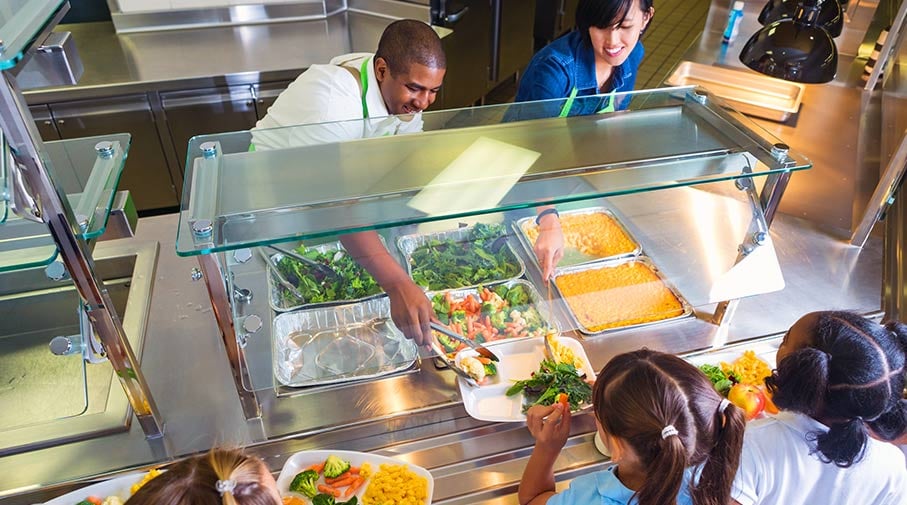
Create the Layout
Creating a cafeteria that runs well is one of the most difficult parts of running a school. One of the first things you need to look at is the layout of the cafeteria.
A cafeteria should have a very basic layout that is easy to understand. You need to create a room that allows the eye to travel from one area to the next.
You want students to be able to look around the room and know where they need to go. Any confusion is only going to add to the chaos of students trying to get their food.
The cafeteria should be a large room with the area for serving food on one side. It is best to keep the food on the sides of the room and the tables and chairs in the center.
You may need to step back and envision what it would be like for a student. Are the tables hard to navigate around? Or are they too close together? Is it easy to join the line to get food, or is it difficult to find it in the room? These are things you need to consider when learning how to run a school cafeteria.
Add Design Features
Another thing you need to do is add design features to the room. This is not a complicated step because there aren’t many features that a school cafeteria needs.
Designing a cafeteria needs to be about how the room will function, not how it will look. But there are some features you should include for a more cohesive space.
One thing you should include are signs instructing students where they need to go in the room. This can be very useful for new students or at the beginning of the year when the layout is new. You can also include signs with the cafeteria rules.
You can also incorporate positive signs with quotes or encouraging words. This is a great way to bring some character into the space and make it more fun.
You should also consider giving the school cafeteria a more modern look. A lot of cafeterias tend to look outdated and unappealing to students.
You can keep the design modern and minimal so that it looks nice but does not distract. Investing in high-quality menu displays is also a great way to help students make up their minds.
These displays will catch their eye and help them to decide on the food they want before ordering.
Keep It Minimal
As much as you may want to go all out, a cafeteria should be minimal. The more you add to the space, the less efficient it will become.
The main objective should be creating a space that is easy to navigate for all. Students should be able to get to where they need to go and find their seats as quickly as possible.
You should estimate how many chairs and tables you need so you don’t have too many. These take up space and clutter the room, making it hard to navigate.
Too many tables also encourage students to spread out far from each other. Fewer tables will encourage them to sit together and engage more.
A minimal space also encourages more cleanliness without clutter. Things like trash cans and places to put trays should be visible and available in several areas.
Including only the necessary features throughout the room will help it to stay efficient. This will also help to encourage students to do what they need to do and follow the rules.
Have Cafeteria Rules
Another answer to the question, “How do I run a successful school cafeteria?“ is rules. You need to create a list of guidelines for students.
The cafeteria should be a fun place where students can take a break and enjoy their meals, but it is still important to maintain structure and good behavior. You don’t want to simply let the students loose in the cafeteria to behave as they see fit.
Running a cafeteria is difficult, and having rules in place will help with that. Some general cafeteria rules include no yelling or running in the room.
These are behaviors that create chaos and make it hard to control the students. Everyone should use their indoor voices and stay seated until they finish their meals.
Bad behaviors like stealing food, throwing food or standing on tables are not allowed. Many of these rules are the same as those used throughout the rest of the school.
Be sure to announce these rules and put them on posters or signs. This will help to remind students how to behave and reinforce good behavior.
Have Supervisors in the Room
If you need to know how to manage a school cafeteria, having supervisors is vital. Supervisors can be teachers who stay in the cafeteria to watch the students.
Their presence is often useful in keeping students in line because an adult is in the room. Often this is all that is required to remind students that they need to behave.
Supervisors are there to supervise and discipline as necessary. They can help to break up any bad behavior and encourage students to move efficiently.
Having supervisors present will help keep lunchtime efficient and punctual. It also helps those managing the food in case any issues arise.
If a student is acting up badly, supervisors can issue punishment. Often this means that the student will have to sit with the supervisor until the end of lunch.
Have Strict Times
Are you wondering, how do I run a successful school cafeteria? Part of this is maintaining a punctual schedule for those eating lunch.
Many people tend to overlook the importance of having scheduled times for lunch. Even if students are just five minutes late to the cafeteria, this has a domino effect.
Students will feel rushed and will not behave as they should. If they are late, some students may not get their food in time to eat it.
When lunch starts later than normal, students will not want to go back to class on time. Lunchtime provides just enough time for students to eat, so there isn’t any room for tardiness.
Use a bell to announce when lunch begins and when it ends. This instructs students so they do not accidentally arrive or leave late.
The available supervisors can use the bell to make sure students are staying on schedule. They may have to move along students who are lagging behind after lunch.
Serve Better School Lunches
The majority of school lunches have a bad reputation among students. This is due to the poor quality of food being served in a lot of schools.
The good news is that now more and more schools are starting to step up. School lunches are becoming more nutritional and tastier to encourage better eating habits.
There are many resources that schools can take advantage of for better school meals. These include healthier options that parents and students will appreciate.
Keep in mind that advertising school lunches is also important. You can encourage students to buy lunches by advertising in appealing ways.
It is also a great option to have snacks available or vending machines. Make sure to have an effective point-of-sale system in place as well and when it comes to what to offer, you should lean toward healthier options instead of candy and soda vending machines.
Have Assigned Tables
For help with how to manage a school cafeteria, one approach that many people don’t use is assigning tables and seats. This may seem like a lot of extra work, but it can make a huge impact on how the cafeteria runs.
Part of the chaos is due to students trying to find a place to sit. They may be looking for their friends or for empty seats in a crowded cafeteria.
This results in lost time and difficulty navigating the room. Students who are trying to get their food may be interrupted by students walking around.
The best way to counteract this problem is to have assigned seats and tables. Students may not like this at first, but they will quickly understand how helpful it can be.
This means that students will know exactly where they need to go once they get their food. There will be no confusion, and they won’t have to search for empty seats.
How you assign these areas depends on your school and your goals. You may do this according to the ages of the students or the students who are in classrooms together.
One of the easiest ways to do this is to group students according to grades. This means that students the same age will be together, allowing friends to stay together.
Benefits of School Cafeteria Management
If you are in charge of school cafeteria management and you want to know how to run a school cafeteria, you may not know where to start. These tips will help you implement a plan that provides an efficient structure and a positive experience.
There are many benefits to running a school cafeteria successfully. You may not notice them at first, but you will definitely notice if the cafeteria is not running well.
If you are running a school cafeteria well, the entire process should flow seamlessly.
Less Stress
The biggest benefit of a well-designed school cafeteria is less stress. Teachers and administrators all feel extreme stress when lunchtime is not running efficiently.
This creates a feeling of chaos that spreads throughout the school, even among the students. Everyone will feel the stress, and it impacts how everyone is able to perform during the school day.
How do I run a successful school cafeteria? The answer is that you eliminate all of the sources of stress that you can find. Less stress keeps everyone in a positive mood and helps students to focus on their work.
This also helps teachers and administrators to focus on their students’ well-being. Allow them to do their jobs instead of worrying about how everything is running.
Calm Environment
Having a structured school cafeteria helps to create a calm environment.
Most people do not associate cafeterias with anything other than noise and chaos, but you can avoid this by implementing some of these cafeteria tips. This will help students get their food easily, find seats, and have time to eat their meals.
Less chaos also allows students to do what they like most during lunch, which is talking to their friends.
Better School Structure
Making sure the school cafeteria is running efficiently impacts the entire school. An efficient cafeteria helps to lower the expectation that lunchtime is going to be chaotic and not punctual.
An efficient cafeteria affects the entire school day because students may go to their next classes late. They may not have been able to eat their lunches in time, resulting in them feeling hungry and grumpy.
How Do I Run a School Cafeteria Efficiently?
To learn how to run a school cafeteria the right way, you need to create a cafeteria plan. This is an important part of the school, as it is in all of the other classrooms.
It is a good idea to get some help on this project so you have a second pair of eyes. If you have a group of administrators helping you, that is even better.
This will help you to create a good cafeteria system that benefits everyone.
Need Help Choosing a Lunch Ordering System?
Don't spend thousands of dollars and countless hours on the wrong choice. Save yourself a lot of headaches by making an informed decision for your school; consider exploring the Vanco Payments School Mealtime Payment System for efficient cafeteria transactions. Download our free guide to get the questions you need to ask before making this critical decision.




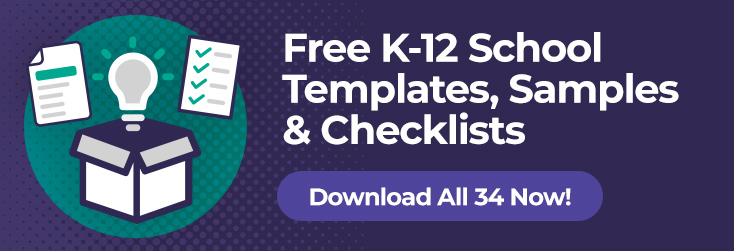
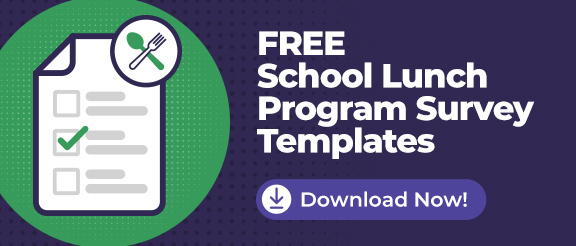

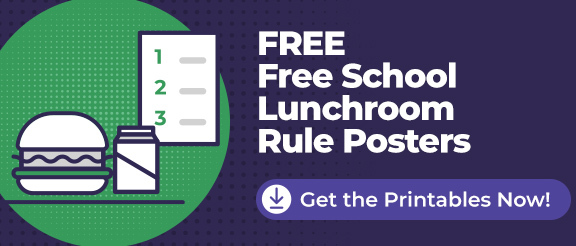
.jpg?width=734&height=251&name=School-Lunch-Kit_blog_CTA_image%20(1).jpg)
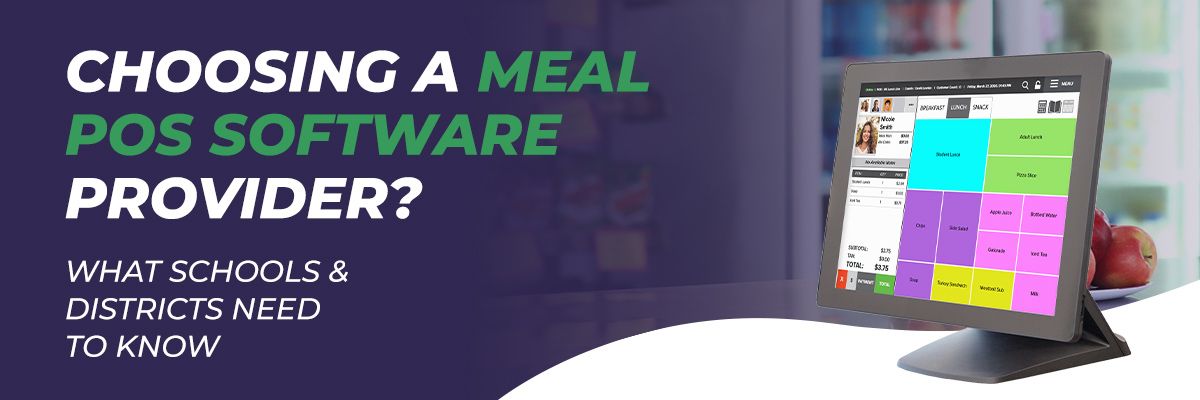

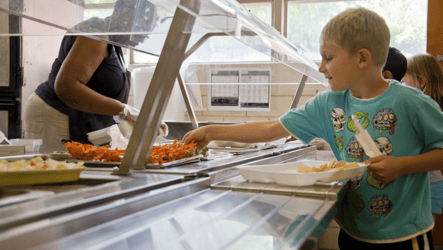
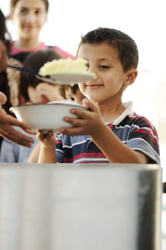

.jpg?width=450&height=250&name=School-Lunch-Rules_thumbnail%20(1).jpg)

